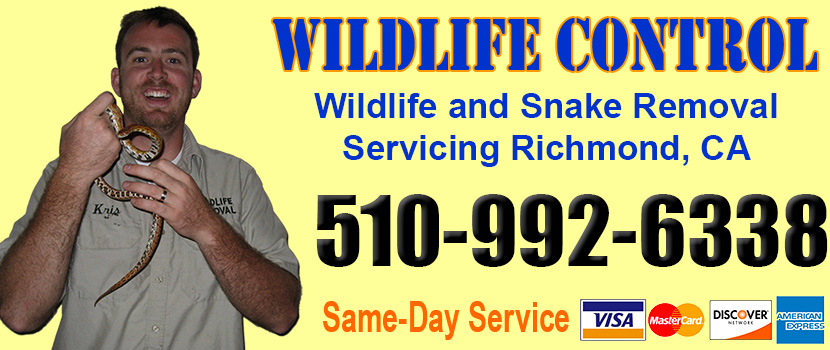
Welcome to richmondcaliforniasnakes.com! I am David, a snake enthusiast living in Richmond, CA. Many people don't know that Richmond is in fact full of snakes! You just need to know where to find them - they can often be shy and elusive. Some California snake species are more common outside of the city limits, in different parts of Contra Costa County CA, but many types of snakes are indeed common in the more urban parts of Richmond. This guide is meant to help educate you about the beautiful snakes of Richmond, and to help you identify the most common snakes of Richmond, as well as the venomous snakes of Richmond that you should learn to recognize and avoid. If you want more detail, click here for my complete list of ALL snake species in Richmond. Remember the following:
- Most snakes of Richmond are harmless and don't want to encounter you
- Venomous snakes exist but are uncommon in Richmond, California
- Snakes eat rats and mice and are a valuable part of the California ecosystem
- Never kill a snake - if you leave a snake alone, it will leave you alone.
Common Snake Species in Richmond
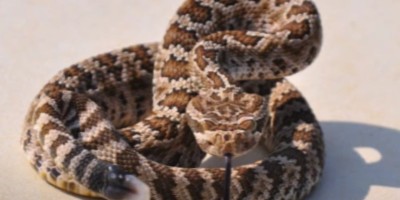 Pacific Gopher Snake:
The Pacific gopher snake (Pituophis catenifer) is found throughout the west coast of the United States. Their natural habitat ranges from woodlands, arid deserts, grassy meadows, and prairies. They can be found in suburban areas that encroach on their natural habitat. They are not venomous but do inflate their bodies, flatten their heads, and shake their tails when threatened. This produces a sound similar to the rattle of rattlesnakes.
The Pacific gopher snake has a base color ranging from yellow to dark brown with gray coloring on the side of the body. They have dark brown spots. The adults can grow from 3 to 7 feet in length, with 4 to 5 being the average. They get their name from a favorite prey- pocket gophers. They also eat birds and their eggs, other small mammals, reptiles, and insects.
Pacific Gopher Snake:
The Pacific gopher snake (Pituophis catenifer) is found throughout the west coast of the United States. Their natural habitat ranges from woodlands, arid deserts, grassy meadows, and prairies. They can be found in suburban areas that encroach on their natural habitat. They are not venomous but do inflate their bodies, flatten their heads, and shake their tails when threatened. This produces a sound similar to the rattle of rattlesnakes.
The Pacific gopher snake has a base color ranging from yellow to dark brown with gray coloring on the side of the body. They have dark brown spots. The adults can grow from 3 to 7 feet in length, with 4 to 5 being the average. They get their name from a favorite prey- pocket gophers. They also eat birds and their eggs, other small mammals, reptiles, and insects.
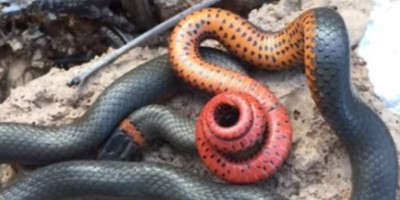 Regal Ringneck Snake:
The regal ringneck snake (Diadophis punctatus Regalis) is found in California and throughout the southwestern United States in Arizona, Nevada, Utah, New Mexico, and Texas. They have gone south into Mexico and north to Idaho. Their primary habitat is arid deserts and they are also found in mountainous areas. They are not venomous but, when threatened, they hide their heads and twist their tails in a corkscrew motion to show off their brightly colored underside while releasing a foul-smelling musk.
The regal ringneck snake is metallic grey in color with a dark-speckled white or cream underside that is red or orange near and underneath the tail. It has a distinct orange band that is bordered by black around the neck. They vary in size from 7-9 inches to 34.3 inches. They are somewhat unique in that their diet consists primarily of other snakes.
Regal Ringneck Snake:
The regal ringneck snake (Diadophis punctatus Regalis) is found in California and throughout the southwestern United States in Arizona, Nevada, Utah, New Mexico, and Texas. They have gone south into Mexico and north to Idaho. Their primary habitat is arid deserts and they are also found in mountainous areas. They are not venomous but, when threatened, they hide their heads and twist their tails in a corkscrew motion to show off their brightly colored underside while releasing a foul-smelling musk.
The regal ringneck snake is metallic grey in color with a dark-speckled white or cream underside that is red or orange near and underneath the tail. It has a distinct orange band that is bordered by black around the neck. They vary in size from 7-9 inches to 34.3 inches. They are somewhat unique in that their diet consists primarily of other snakes.
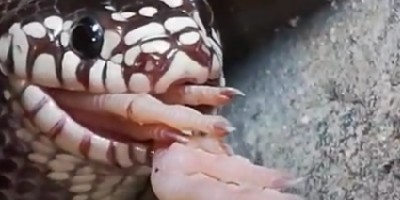 California Kingsnake:
The California kingsnake (Lampropeltis Californiae) is found throughout the western United States and northern Mexico. It can be found in the mountains to an elevation of 6,100 feet. It has adapted to a wide range of habitats, including grasslands, deserts, marshes, woodland chaparrals, and suburban areas. They are non-venomous.
The California kingsnake comes in a wide variety of colors, black and brown being common, and they usually have black/brown or white/tan stripes. Their average length is two feet but they have been known to grow to a little more than three feet. They “smell” using their forked tongue and Jacobson organ to taste and analyze scent particles. They are constrictors and feed by squeezing and suffocating prey.
California Kingsnake:
The California kingsnake (Lampropeltis Californiae) is found throughout the western United States and northern Mexico. It can be found in the mountains to an elevation of 6,100 feet. It has adapted to a wide range of habitats, including grasslands, deserts, marshes, woodland chaparrals, and suburban areas. They are non-venomous.
The California kingsnake comes in a wide variety of colors, black and brown being common, and they usually have black/brown or white/tan stripes. Their average length is two feet but they have been known to grow to a little more than three feet. They “smell” using their forked tongue and Jacobson organ to taste and analyze scent particles. They are constrictors and feed by squeezing and suffocating prey.
Venomous Snake Species in Richmond
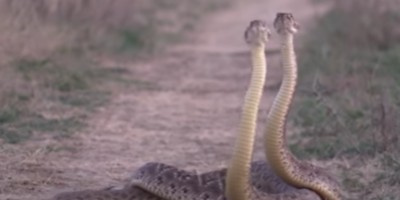 Western Diamondback Rattlesnake:
The western diamondback rattlesnake (Crotalus Atrox) can be found in the southwestern United States from California to New Mexico, Nevada, Arizona, Texas, and east to Arkansas and Oklahoma. They can often be seen on less traveled blacktop roads in the early evening because the surface retains the heat of the day as the temperature dips. They have a wide range of habitats from rocky canyons and hillsides to coastal plains. They like to hide in scrub brush, mesquite grassland, sandy creosote, and pine-oak forests. They are highly venomous and should not be approached.
The western diamondback snake is usually a dusty brown or gray color, but some are pinkish-brown, brick red, yellowish, pinkish, or chalky white. They have a distinctive black diamond pattern (hence their name) and black bands on their tails. They are usually about 4 feet in length, with some reaching 5 feet. They dine on a variety of small mammals, rodents, lizards, and insects.
Western Diamondback Rattlesnake:
The western diamondback rattlesnake (Crotalus Atrox) can be found in the southwestern United States from California to New Mexico, Nevada, Arizona, Texas, and east to Arkansas and Oklahoma. They can often be seen on less traveled blacktop roads in the early evening because the surface retains the heat of the day as the temperature dips. They have a wide range of habitats from rocky canyons and hillsides to coastal plains. They like to hide in scrub brush, mesquite grassland, sandy creosote, and pine-oak forests. They are highly venomous and should not be approached.
The western diamondback snake is usually a dusty brown or gray color, but some are pinkish-brown, brick red, yellowish, pinkish, or chalky white. They have a distinctive black diamond pattern (hence their name) and black bands on their tails. They are usually about 4 feet in length, with some reaching 5 feet. They dine on a variety of small mammals, rodents, lizards, and insects.
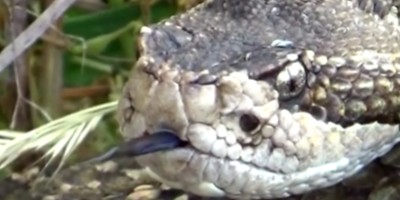 Northern Pacific Rattlesnake:
The northern Pacific rattlesnake (Crotalus oreganus) can be found in western North America from the Baja peninsula in California, up through the west coast and into the south of British Columbia. It can also be found in western and southern Idaho, Nevada, Wyoming, Utah, Arizona, and New Mexico. They have adapted to a wide variety of habitats, including deserts, arid plains, fertile valleys, prairie grasslands, rocky ridges, mountain meadows, and forests. They are venomous.
The northern Pacific rattlesnake has a range of potential colors from dark-brown, dark-gray, olive-brown, black, or pale yellowish ground color. They have a pattern of uneven, dark blotches with uneven white edges. They usually have a pale-yellow belly with brown spots and a dark-brown blotch on the snout. They can reach 39 inches in length. They tend to come out during dawn and dusk and are nocturnal in the heat of summer. They like to stay hidden during the day but will sometimes come out to bask on the rocks.
Northern Pacific Rattlesnake:
The northern Pacific rattlesnake (Crotalus oreganus) can be found in western North America from the Baja peninsula in California, up through the west coast and into the south of British Columbia. It can also be found in western and southern Idaho, Nevada, Wyoming, Utah, Arizona, and New Mexico. They have adapted to a wide variety of habitats, including deserts, arid plains, fertile valleys, prairie grasslands, rocky ridges, mountain meadows, and forests. They are venomous.
The northern Pacific rattlesnake has a range of potential colors from dark-brown, dark-gray, olive-brown, black, or pale yellowish ground color. They have a pattern of uneven, dark blotches with uneven white edges. They usually have a pale-yellow belly with brown spots and a dark-brown blotch on the snout. They can reach 39 inches in length. They tend to come out during dawn and dusk and are nocturnal in the heat of summer. They like to stay hidden during the day but will sometimes come out to bask on the rocks.
If you're unsure, you can email me a photo of the snake at info@richmondcaliforniasnakes.com and I will email you back with the snake's species. If you found a snake skin, read my Found a Skin? page, and you can email me a photo of the skin, and I'll identify the snake for you. If you need professional Richmond snake removal help, click my Get Help page, or see the below website sponsor I found, who provides that service.
Remember, the term is not poisonous snakes of Richmond, it's venomous snakes of Richmond. Poison is generally something you eat, and venom is injected into you. That said, dangerous snakes are very rare in Richmond. The few venomous snakes of Contra Costa County are rarely seen. But they are commonly misidentified, so learn about all the snake species of Richmond in order to correctly identify them. These snakes are usually also found in the surrounding towns of Concord, Martinez, Walnut Creek, Antioch, San Ramon, Brentwood, Danville, Pittsburg, Orinda, Pleasant Hill, Lafayette, Pinole, San Pablo, Oakley, El Cerrito, Moraga, Alamo, Hercules, Discovery Bay, Bay Point, Clayton, El Sobrante, Blackhawk, Diablo, Bethel Island, Crockett, North Richmond, Rodeo, Contra Costa Centre, Knightsen, Pacheco, Byron, Port Costa, Kensington, Tara Hills, East Richmond Heights, Alhambra Valley, Bayview-Montalvin, Vine Hill, Clyde, Rollingwood, Shore Acres, and the surrounding areas.
Read our article about:
Do snakes always inject venom when they bite?
richmondcaliforniasnakes.com domain and hosting costs made possible by the generous support of this sponsor:
